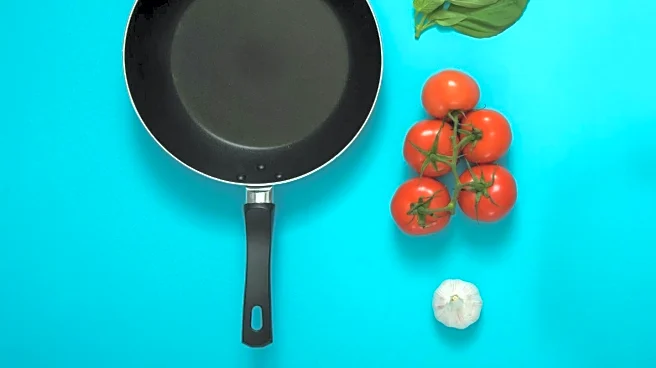What's Happening?
Chef Richard LaMarita, a culinary instructor at the Institute of Culinary Education in New York City, has highlighted the limitations of nonstick pans in cooking certain foods. According to LaMarita, nonstick pans are not suitable for high-heat cooking, which is essential for achieving a proper sear on meats and fish. The coating on nonstick pans prevents the development of a caramelized crust, which is crucial for flavor. Additionally, nonstick pans are not ideal for cooking vegetables that require charring for maximum taste. LaMarita also advises against using nonstick pans for caramelizing foods, as they lack the necessary surface heat to create fond, the flavorful bits left after searing. High-acid foods, such as tomato sauces, can corrode the nonstick surface over time, further reducing the pan's effectiveness. Stir-fry dishes and sauces that require constant stirring can also wear down the nonstick coating prematurely.
Why It's Important?
The advice from Chef LaMarita is significant for home cooks and culinary professionals alike, as it impacts the quality and flavor of dishes prepared using nonstick cookware. Nonstick pans are popular for their convenience and ease of cleaning, but their limitations can lead to suboptimal cooking results. Understanding these limitations can help cooks choose the right type of cookware for specific dishes, ensuring better flavor and texture. This information is particularly relevant for those who invest in high-quality nonstick pans, as improper use can lead to faster deterioration of the cookware, resulting in additional costs for replacements. The broader implication is a shift towards using more versatile cookware, such as stainless steel or cast iron, which can handle higher temperatures and provide better cooking results.
What's Next?
Cooks and culinary enthusiasts may reconsider their use of nonstick pans for certain recipes, opting instead for cookware that can withstand higher temperatures and provide better flavor development. This shift could lead to increased sales of stainless steel and cast iron pans, as consumers seek alternatives that offer more versatility in the kitchen. Manufacturers of nonstick cookware might respond by developing products with improved heat tolerance or by educating consumers on proper usage to extend the lifespan of their pans. Additionally, culinary schools and cooking classes may incorporate this knowledge into their curricula, emphasizing the importance of selecting the right cookware for different cooking techniques.
Beyond the Headlines
The discussion around nonstick cookware also touches on environmental and health considerations. Nonstick coatings, often made from materials like Teflon, can release harmful chemicals when overheated. This has led to increased scrutiny and demand for safer alternatives. The shift towards using other types of cookware could reduce exposure to these chemicals, promoting healthier cooking practices. Furthermore, the environmental impact of nonstick pans, which may need to be replaced more frequently due to wear and tear, could be mitigated by choosing more durable options like cast iron, which can last for generations.













